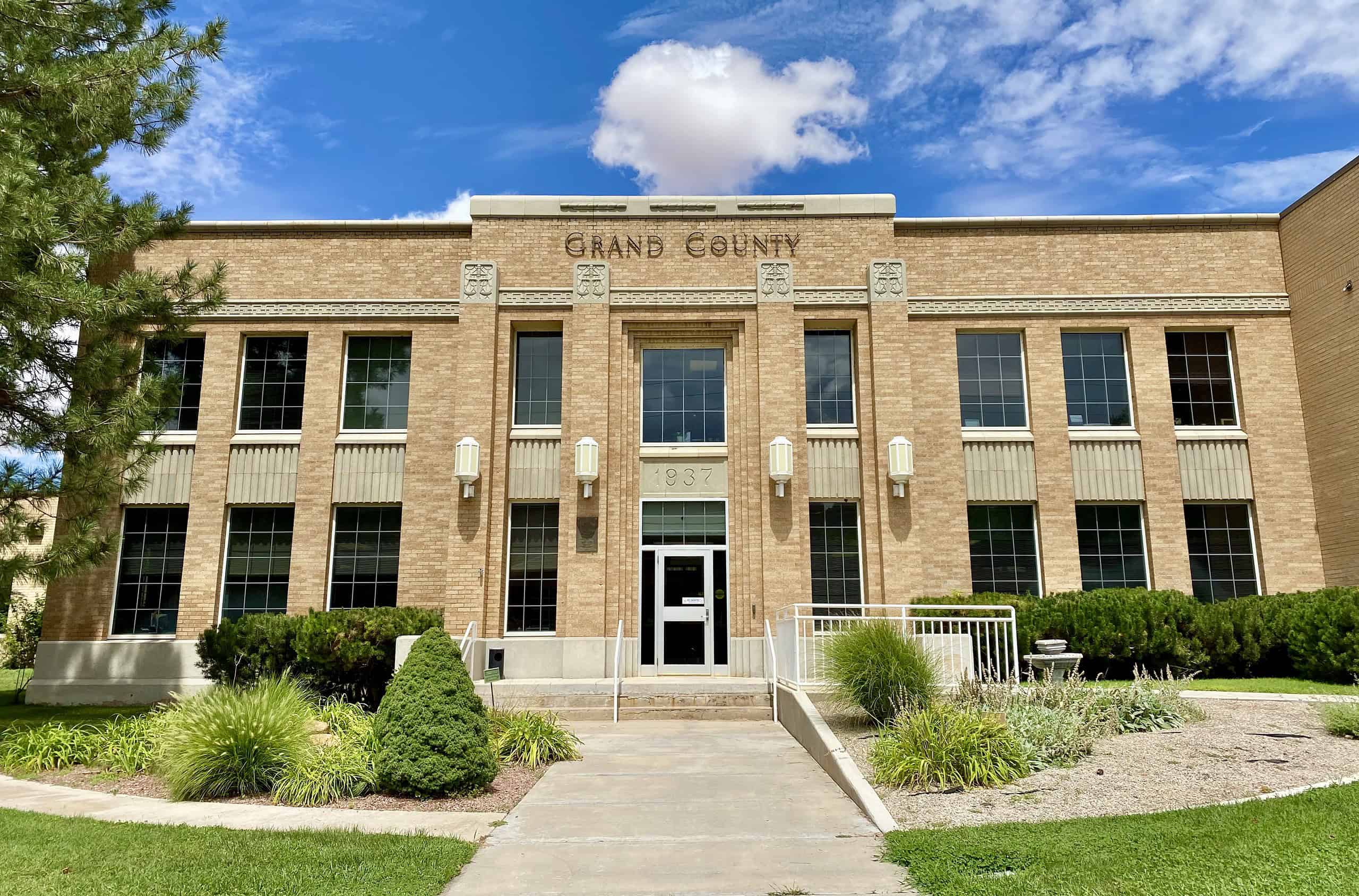Some information may be outdated.
Grand County planners are inching ahead with a draft proposal for an “alternative dwelling” ordinance that would codify long term residence in unconventional homes like RVs, tiny homes, vans, yurts or tents. At an Oct. 4 workshop ahead of their regular meeting, Grand County Commissioners met with the county planning commission to discuss remaining “sticking points” in the concept.
The ordinance is intended to open a niche in the area’s tight housing market for Grand County workers who can’t find an affordable house, apartment, or room. Many workers already live in vehicles or tents, either out of town on public lands, in long term RV parks, or illegally on private land in the county. Planners feel a sense of urgency as waitlists for subsidized housing programs grow, the number of people seeking homelessness and prevention services increases, and employers struggle to maintain adequate staffing because employees can’t find stable housing. At the same time, planners don’t want to compromise public health and safety or quality of life, either for residents who may take advantage of the alternative dwelling option or for residents who fear their neighborhoods will be adversely affected by such developments.
Grand County Planning Director Elissa Martin outlined the details that still need to be pinned down, such as the parameters of the pilot program. Planners wanted to put a cap on the policy so they can see how it plays out in reality with an initial round of development before authorizing more alternative dwellings. The planning commission originally suggested capping the pilot at 300 units, based on the known current need for housing, but skeptics thought that number was too high—it could have major impacts on neighborhoods before the county had the chance to observe how the concept was working. Commissioners tentatively agreed on 150 units for a pilot program, reasoning that some applicants likely won’t follow through with the developments, and noting that at least one project that’s poised to take advantage of the program would absorb close to 50 of those spots in an existing RV park.
Water is at the root of more sticking points. Planners wondered whether the alternative dwellings should be allowed to use wells and septic tanks; they resolved this point by determining that the pilot should only apply to the Moab Valley, excluding outlying areas like Thompson Springs for now, and that the alternative dwellings should be subject to the same rules applying to the valley requiring them to hook up to municipal utilities where possible.
Another water issue that residents have pointed out is that water hookups allotted to alternative dwellings diminish the total number of water hookups available, potentially short-changing property owners who want to develop their lots in the future. Grand Water and Sewer Service Agency Manager Dana Van Horn also explained to commissioners that the agency is required by the state to maintain 800 gallons of stored water per day for each household water hookup. At some point, GWSSA’s system will reach capacity, she said, and they won’t be able to accommodate any more hookups of any kind, regardless of the type of dwelling and how much water is used. Van Horn also urged the commission to consider that water use at an RV differs from water use in a traditional home: in particular, sewage from RVs is more concentrated and can cause complications for the sewage treatment plant.
A requirement that alternative dwelling developments provide a communal kitchen was also reviewed. Workshop participants mostly agreed that a fully equipped kitchen might be too much to require of a developer, and might not even be on the wish list of potential residents. Instead, they recommended a covered communal area with a sink and basin, a barbecue for cooking, and a utility surface.
Other points of discussion included the need for a communal bath house, the size and type of pad for different kinds of alternative dwellings, and the requirement that the developments include some kind of community space. Policy makers also discussed the density and building square footage requirements in the draft. As written, the building footprint must align with the existing zoning, but there can be multiple individual dwellings making up that footprint.
It’s agreed that there will be no tolerance for short-term rentals in alternative dwelling units, and that the commission will have legislative discretion over each development proposal. Martin also clarified that existing illegal RV campers will not be able to automatically apply for an alternative dwelling permit to continue camping in the same spot; instead, the alternative dwelling ordinance will create viable, legal alternatives for people currently living illegally in temporary dwellings on private property.
To read the draft ordinance and find out more about this and other county initiatives, visit grandcountyconnects.com.
Appreciate the coverage? Help keep local news alive.
Chip in to support the Moab Sun News.





